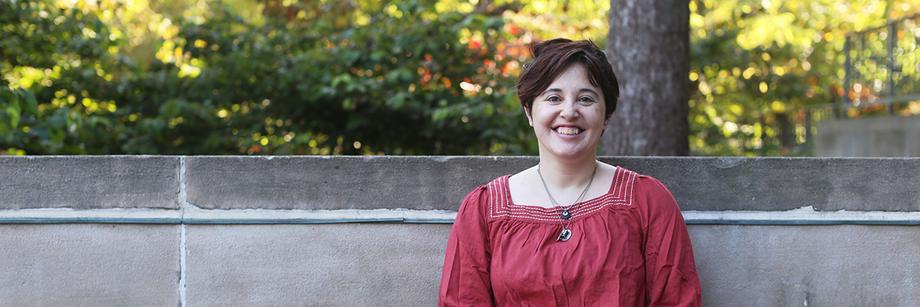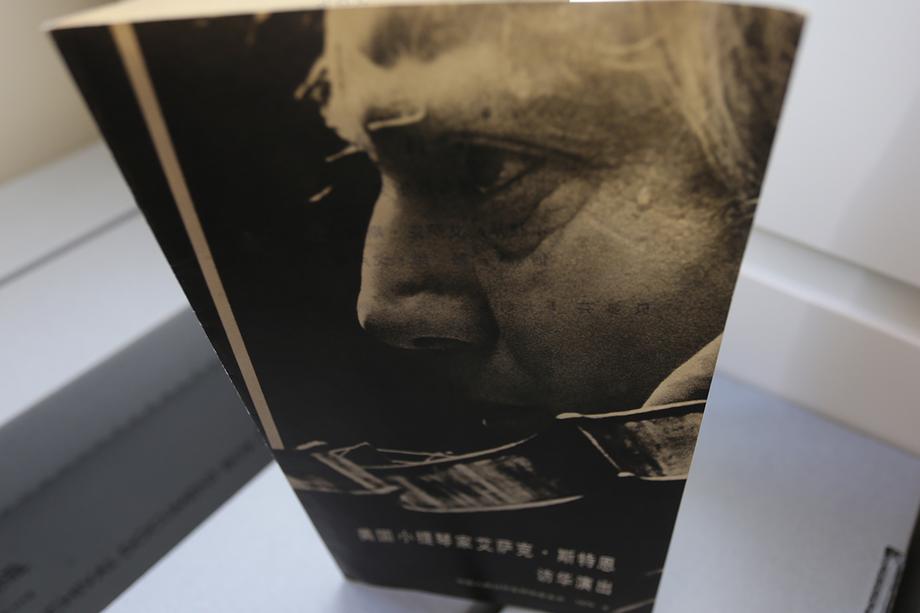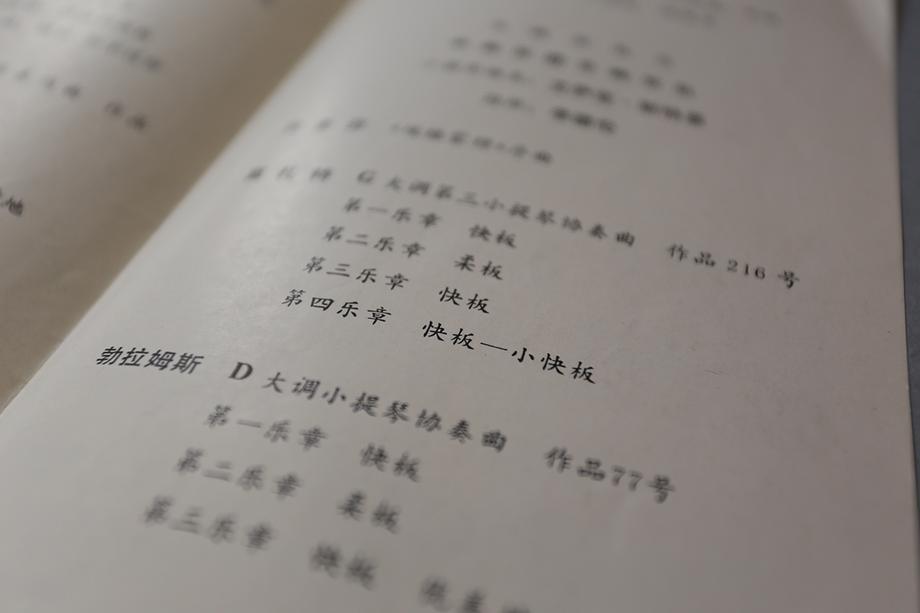Music from afar
November 19, 2021
Alone in the still-closed Hatcher Library, Anne Rebull was sorting through one of many boxes that make up a collection of Chinese performing arts programs when one item stopped her cold.
In that moment Rebull, a lecturer in Chinese Culture and Literature with a PhD in Chinese performance, says her "worlds collided."
Since 2019, she'd been working part time in Asia Library, sorting through boxes containing around 2500 programs of performances in China dating back from the 1950s.
Her task involved ensuring that the archival boxes she was building and describing would make for a coherent collection. That meant noting key information about each program, such as performance dates (not always easy to find), and separating items the original collector had included that weren't quite programs, like a magazine about how to buy costumes and the like for ballet performances.
Hour by hour, the work might sound a little tedious; during certain historical periods, for example immediately following the Cultural Revolution (1966-1976), there's a sameness to the programs, a similar look and "a kind of repeated theme over and over again of 'we denounce the Gang of Four,' and we're going to feature Chinese folk songs that haven't been performed in 10 years."
But that was a marked shift from the prior period. "We don't have much from the 60s and 70s, because the Cultural Revolution defined what was performed," Rebull explained. "You didn't need programs because everybody knew the story."
In other words, the power and potential of collections like the one Rebull is working on are mostly cumulative; this one is telling a story over decades about the shifting intersection of politics and culture in a country where the performing arts have long been bound up in both.
The item that disrupted Rebull's rhythm on that quiet afternoon was a program from an Isaac Stern concert performed during his historic 1979 tour of China.
It felt a little bit like a piece of her own past.

Rebull, who studied violin as an undergraduate, was more than familiar with this concert, which was famously chronicled in the Academy-Award-winning documentary From Mao to Mozart (1981). Given her background, it was a frequent topic of discussion among her grad student cohorts, who were particularly interested in her performer's perspective.
But her excitement wasn't just personal. That concert represented an important moment for China and its engagement with the world. Stern had to have been one of the first American artists to visit the People's Republic of China, Rebull says, because diplomatic relations with the U.S. had only just been established that year.
And the program tells its dramatic story beyond the information it provides.
Among all the look-alike Cultural Revolution programs, it stood out enough that Rebull first assumed it was something from the 1980s or 90s. The design was a huge departure — dramatic in a Western style, with an image of the performer and heavy black text (red was more common), and a tall, narrow layout that stood out among the many letter-size items.

When she realized what it was, she thought, "Here's the moment they really opened to the world."
It wasn't just the inclusion of Western music that Chinese performers had been jailed for performing just a few years prior; it was also the welcoming of a film crew to document the tour. Propaganda it might have been, but the tour, the music, and the interactions with Chinese performers, students, and audiences were very real.
And while Stern might have been among the first, he wouldn't be the last.
"In the 1980s, they started inviting many more foreign groups to come to China, which had a dramatic impact," Rebull said. She sees in the programs a move toward producing innovative modern Chinese dance, for example — as if in response to the variety they saw in the visiting performances.
But she adds that this innovation met with pushback. Throughout the 1980s, she sees oscillations between openness and traditionalism in the performing arts in China. "You can track it through the programs, when things become more conservative versus when they push toward being more experimental."
Her work to examine and organize these cultural artifacts, and the ebb and flow they so vividly illustrate, has aided her understanding of what it was like for people living in late twentieth-century China.
Rebull's journey continues. She expects to reach the end of the collection — which includes programs from performances as recent as 2018 — in the coming months.
by Lynne Raughley

Interior of Stern concert program; photo by Alan Piñon.